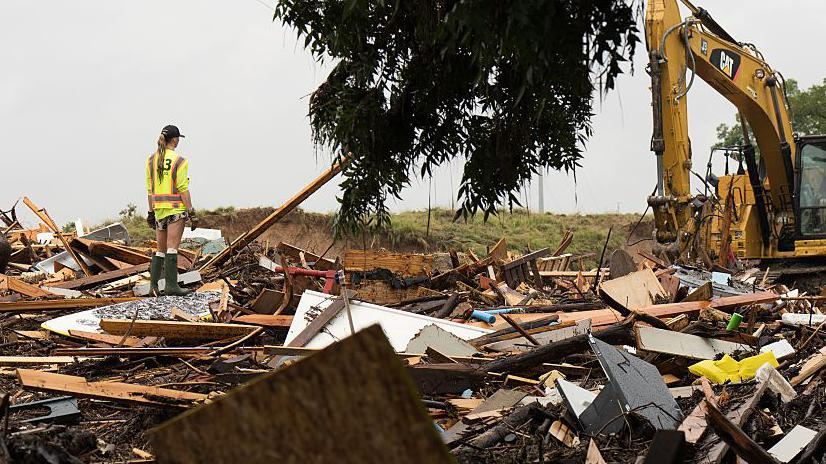Trump's New Travel Ban Targets Twelve Countries including Afghanistan, Iran, Somalia, Yemen and Myanmar, Shutting Out Millions - Is This the Beginning of 'Closed Door' Era in the US? - Travel And Tour World
Monday, July 7, 2025

In a bold move, President Donald Trump’s new travel ban has targeted twelve countries, including Afghanistan, Iran, Somalia, Yemen, and Myanmar, effectively shutting out millions of potential travelers. The sweeping restrictions have sparked outrage globally, with critics questioning whether this marks the beginning of America’s “Closed Door” era. As nationals from these nations face indefinite barriers to entry, the ban has raised fears about its long-term implications on international relations, global tourism, and the perception of the United States as a welcoming destination for people from all walks of life. The decision has ignited a fierce debate about national security, immigration policies, and the growing isolationist sentiment within the US
Thousands of travelers were left in limbo as news of the ban spread. Many found themselves stuck in airport lounges, unable to board flights to the United States, while others were left scrambling to understand whether they would still be allowed entry. Social media platforms were flooded with tweets and posts from individuals directly affected, sharing grievances, personal accounts, and queries about how the policy would impact them. From confusion at passport control to last-minute changes to travel itineraries, it was evident that Trump’s signature policy move had set off a snowball effect of holiday disruption, particularly for nationals from the affected countries.
The newly signed executive order divided the affected countries into two categories: those facing complete entry bans and those with restricted visa categories. For travelers from countries like Afghanistan, Chad, Eritrea, and Somalia, this policy effectively shut the door to the United States, leaving them caught in the crossfire of heightened security measures.
For some, this ban meant more than just administrative inconvenience—it had the potential to alter the course of their lives. Tourists who had planned visits to relatives or had important business meetings scheduled were left scrambling for alternative destinations. Others, who had planned their trips months in advance, were held back as their visa processes were suddenly delayed or deferred. Emotional impacts were also evident, with reports of individuals being rejected at airports and missing flights despite having valid tickets and travel documents.
The new travel ban was split into two groups:
The uncertainty surrounding the specifics of these differences only fueled the panic. While some travelers from affected countries were outright banned from entry, others were left uncertain whether their visa applications would be approved, adding to the growing unease among international travelers.
The Trump administration defended the travel ban on the grounds of national security. The order outlined three major justifications for including specific countries:
Despite the broad scope of the ban, the executive order did include some exemptions, allowing certain individuals to travel to the US despite the restrictions:
Trump’s second travel ban was, in many ways, a more calculated and orchestrated policy compared to his first one. The 2017 ban, which became widely known as the “Muslim Ban,” was introduced with minimal notice, causing chaos at airports as travelers were caught off guard. The initial rollout resulted in widespread protests and legal challenges, with severe impacts on families, businesses, and scholars. Eventually, courts upheld the ban, but it remained controversial due to the perception that it was discriminatory.
By contrast, the 2025 ban had a more systematic rollout. The administration included exemptions and provided a brief window for implementation, likely in an attempt to avoid the chaos and backlash that characterized the first travel ban. However, the resulting confusion and frustration among affected travelers were no less severe, with many still questioning the fairness of the policy.
As the new ban took effect, airports around the world became hubs of discontent. Travelers from the affected countries found themselves either detained at immigration or scrambling to revise their travel plans. Social media exploded with complaints, personal stories of disrupted travel, and accounts of travelers being refused entry despite having valid tickets and visas.
For many, the emotional toll was significant. Individuals had planned family reunions, business meetings, and educational trips, only to have their plans derailed by a policy they had no control over. In some cases, families were separated at airports, and some travelers were forced to return to their countries of origin after being assured they would be allowed to board their flights.
Travel agencies and airlines were also caught in the chaos, with customers demanding refunds or attempting to rebook their flights. Long lines formed at ticket counters as frustrated passengers sought redress. In some countries, the travel disruption escalated into diplomatic tension, with foreign governments protesting the blanket bans and questioning the rationale behind the policy.
The latest ban was part of a broader pattern of travel restrictions that had been implemented under Trump’s administration. The timeline of these bans shows increasing controversy and legal battles:
While the latest travel ban has sparked widespread upheaval, its long-term effects remain uncertain. Legal challenges are already underway, and some observers speculate that this ban will face greater resistance in court than previous versions. Whether the policy will withstand judicial scrutiny or be struck down in future rulings remains to be seen. However, it is clear that immigration policy will remain a major issue throughout Trump’s second term.
«Enjoyed this post? Never miss out on future posts by following us»
Tags: Afghanistan, America First, closed door policy, global tourism impact, immigration debate, international relations, iran, myanmar, national security, national security concerns, Somalia, travel ban impact, travel chaos, Travel News, travel restrictions, Trump administration policy, Trump Travel ban, US border control, US foreign policy, US Immigration, US immigration policy, US travel policy, visa restrictions, Yemen













